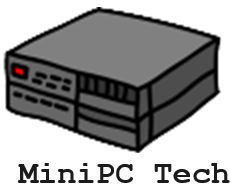Introduction
To scale your Raspberry Pi project into a commercial product, start by conducting thorough market research to identify your target audience and competitors. Choose the right Raspberry Pi variant that fits your project’s needs, balancing cost and performance. Pay attention to technical specifications, ensuring all components are compatible. Focus on designing for mass production, optimizing size, and energy efficiency. Finally, stay compliant with relevant regulations and software licenses. Addressing these factors will position you for success as you launch your product, opening up further pathways for exploration as you refine your approach.
Key Takeaways
- Conduct market research to identify your target audience, competitors, and potential changes in demand for your product.
- Select the appropriate Raspberry Pi model based on your project’s requirements, focusing on processing power and compatibility.
- Develop a robust supply chain strategy to ensure reliable sourcing and management of components and Raspberry Pi boards.
- Optimize your product design for mass production, prioritizing cost, size, energy efficiency, and effective communication protocols.
- Ensure compliance with software licenses, regulatory standards, and environmental regulations to avoid legal challenges.
Assessing Feasibility for Commercial Use
When considering scaling your Raspberry Pi Project into a commercial product, it’s essential to assess the feasibility from multiple angles. Start with thorough market research to identify your target audience, potential competitors, and expected demand. This insight not only validates your concept but also shapes product features and pricing strategies.
Next, don’t overlook the licensing implications associated with using Raspberry Pi. You’ll need to guarantee compliance with open-source software licenses, particularly those linked to Linux. Additionally, review any specific hardware licensing terms set by the Raspberry Pi Foundation. These requirements can greatly impact production timelines and costs.
You should also familiarize yourself with export regulations that may pertain to Raspberry Pi components. Meeting necessary certifications, such as CE and FCC, is critical for market acceptance and legal compliance. Furthermore, understanding that microcontrollers excel at controlling hardware can help guide your decision on whether to use Raspberry Pi or other alternatives. While Raspberry Pis can be used in commercial products, it’s important to be aware of the growing concern regarding availability challenges at higher production volumes.
Finally, consider the total costs related to development and production, and assess if Raspberry Pi remains the most cost-effective solution for your innovation aspirations. By addressing these factors, you’ll strengthen your project’s foundation for successful commercialization.
Choosing the Right Raspberry Pi Variant
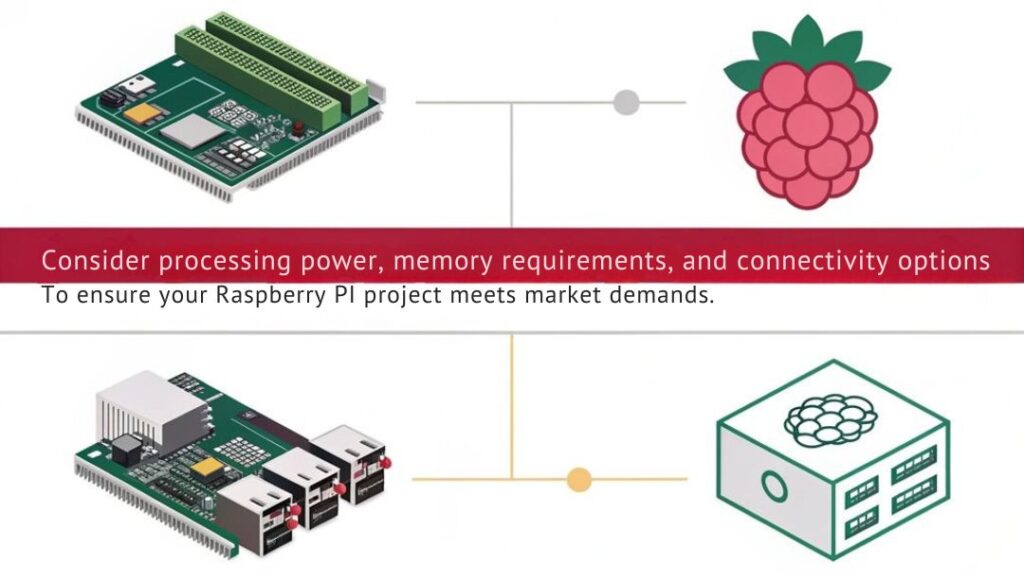
Having assessed the feasibility of your Raspberry Pi project into a commercial product, the next step is selecting the right Raspberry Pi variant that aligns with your project requirements.
Start by evaluating the application suitability of each variant. If you need high processing power and robust connectivity, consider the Raspberry Pi 4 Model B. Its quad-core processor and full-feature set support demanding applications effectively, making it ideal for dual 4K displays. Additionally, the Raspberry Pi 4 Model B has options for multiple RAM configurations, allowing you to choose the best setup for your specific use case. For even more powerful projects, the new Raspberry Pi 5 offers a significant boost in CPU performance with its Cortex-A76 CPU and enhanced multi-threading capabilities.
For budget-sensitive projects requiring a compact solution, the Raspberry Pi 3 Model A+ offers a cost-effective alternative, although it lacks Ethernet and has limited ports.
Alternatively, if you’re venturing into large-scale production, the Raspberry Pi Compute Modules are designed for integration into custom PCBs, providing enhanced I/O options and reliability.
If your focus is on ultra-low-cost projects where form factor matters, the Raspberry Pi Zero W is incredibly compact and provides wireless capabilities. However, keep in mind its limited processing power and connectivity options, which may hinder complex setups. For projects needing faster storage solutions, consider using an M.2 NVMe SSD with a compatible HAT for enhanced performance. The use of such storage solutions can also benefit from the improved I/O bandwidth found in newer models like the Raspberry Pi 5.
Technical Considerations for Scaling
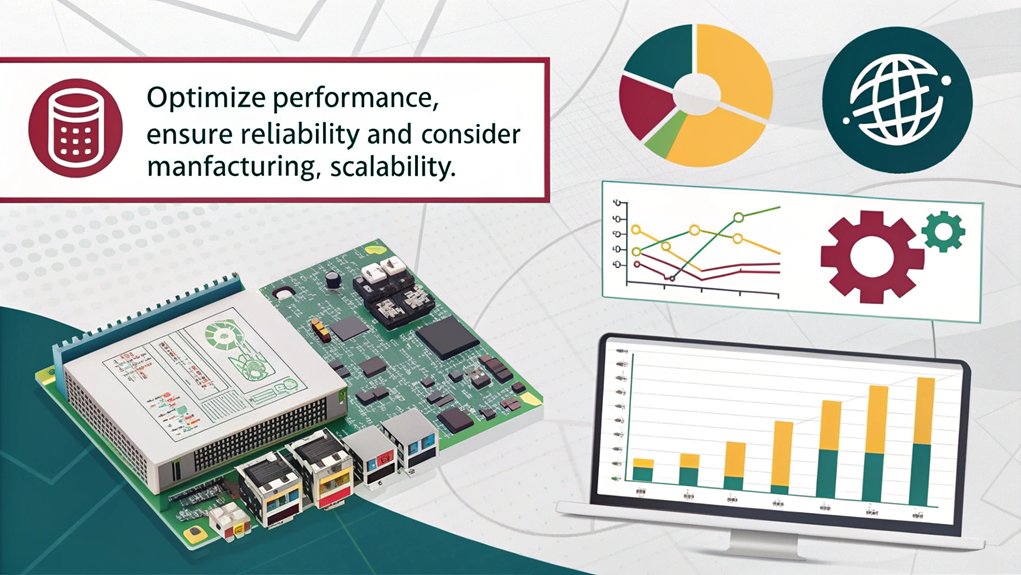
Scaling a Raspberry Pi project into a commercial product successfully hinges on several technical considerations that can greatly impact performance and efficiency. First, consider power management and data processing. While Raspberry Pi boards are power-efficient, managing power distribution across multiple devices can be challenging. Implementing a centralized power bus can prevent overloads and streamline management, similar to the energy efficiency seen in Mini PCs with around 15 watts of power consumption. Additionally, the affordable entry point for IoT projects makes Raspberry Pi an attractive option for developers looking to scale effectively. One such challenge is the limited GPIO ports available, which can restrict connections to multiple sensors and devices.
Next, the choice of hardware is vital. As Raspberry Pi may face availability issues, seeking alternatives like Banana Pi or compute modules could provide the necessary reliability and compactness for integration into your design.
Here’s a quick comparison:
| Aspect | Raspberry Pi |
|---|---|
| Power Management | Complex for fleets |
| Connectivity | Space-consuming |
| Integration | Limited with custom PCBs |
Additionally, as you scale your Raspberry Pi project into a commercial product, focusing on modular architectures will enhance scalability. By breaking down designs into logic, power management, and data-processing modules, you can adapt to various requirements and guarantee seamless integration with sensors and motors, much like how integrated Neural Processing Units (NPUs) optimize AI-intensive tasks. Staying flexible allows for better adjustments as your project evolves, paving the way for innovation and growth in your Raspberry Pi venture.
Designing for Mass Production
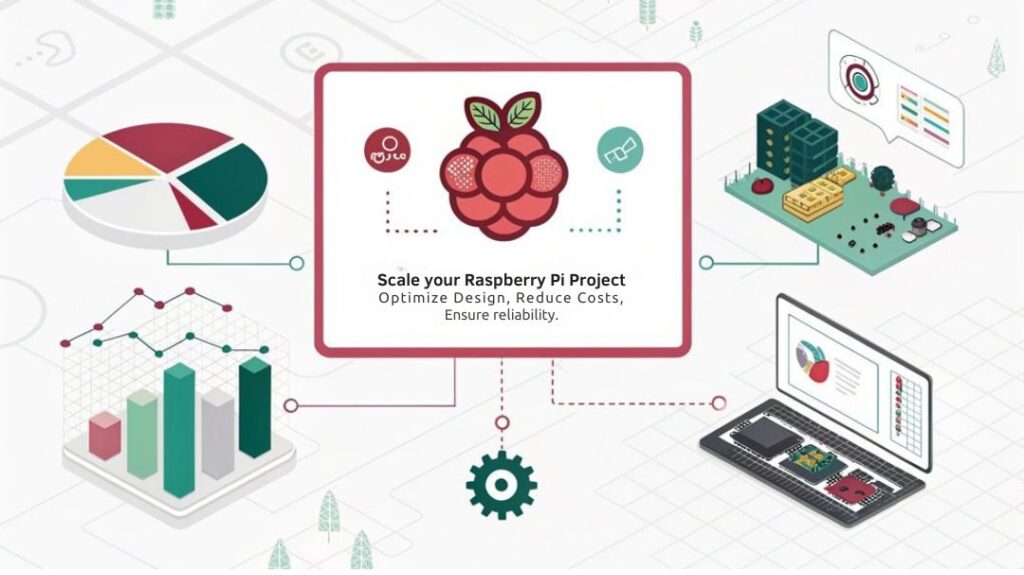
Designing for mass production requires careful consideration of size, cost, and supply chain reliability. As you move from prototype to production, standard Raspberry Pi boards may pose challenges due to their larger footprint and unnecessary connectors, which can complicate board integration. For instance, the latest models like the Raspberry Pi 4 B and Pi 5 offer advanced features such as high-performance processors that need to be balanced against production costs.
For compact designs, consider using Raspberry Pi Compute Modules, which are tailored for integration into custom PCBs and provide significant savings in space. Additionally, Compute Modules present an attractively scalable option for manufacturing as they allow for direct transitions from prototype features to production without major modifications. Furthermore, community feedback on design features during the early stages can significantly enhance product appeal and usability. Ensuring reliable communication protocols such as RS485 connections is also crucial for maintaining smooth operations.
Cost-efficiency is another vital factor. Standard boards often come with features that may not be necessary for your commercial product, making them more expensive than alternatives like Banana Pi or Orange Pi, which also boast better supply chain reliability.
By opting for these alternatives or Compute Modules, you’re more likely to secure consistent availability, essential for large production runs. Ensuring compatibility with various peripherals like Wi-Fi and Ethernet connections is also crucial for a smooth transition.
To guarantee a successful shift, initial testing on a Compute Module I/O board can mimic your final design’s functionality and streamline the development process. This process should include real-time data sampling every 2 seconds to ensure immediate insights into system performance.
Leveraging the right components and maintaining awareness of supply chain issues can ultimately enhance your product’s competitiveness and viability in the market.
Overcoming Practical Challenges
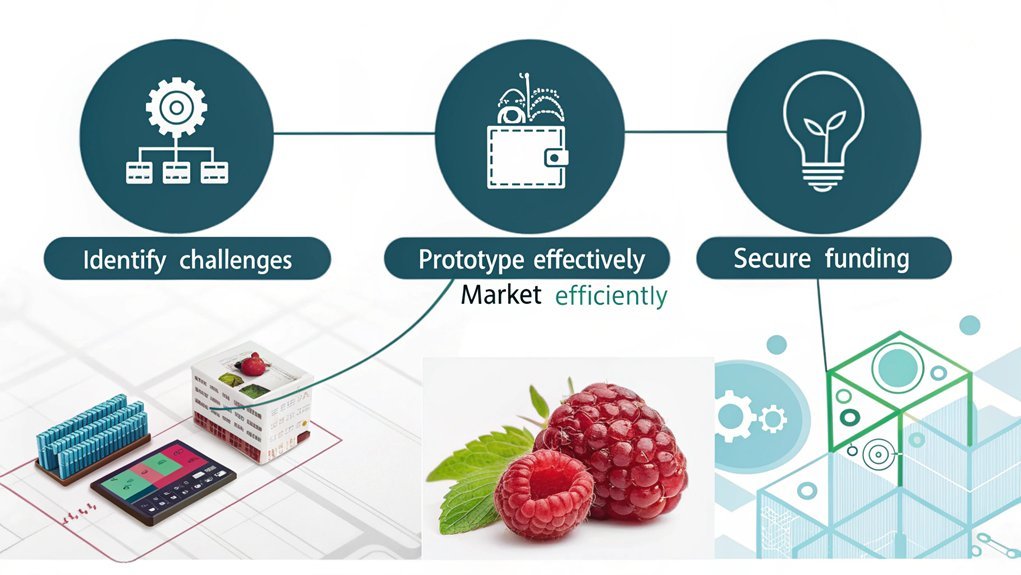
Overcoming practical challenges in Raspberry Pi projects often comes down to steering through issues like component availability and compatibility. Given the current supply chain disruptions, you might find sourcing Raspberry Pi boards in bulk to be a significant hurdle. Additionally, the market demand for Raspberry Pi is growing, making it crucial to secure supply lines early to meet your project’s needs. It’s also worth noting that many successful integrations demonstrate that Raspberry Pi can be effectively commercialized.
Alternatively, consider using boards like Banana Pi or Rock Pi to diversify your options. Next, focus on guaranteeing all components, such as sensors and motors, are compatible with your chosen board’s specifications, especially considering the performance metrics of each model. Pay special attention to power management—implement a robust system to handle varying power requirements efficiently, similar to ensuring sufficient storage capacity for multimedia applications.
You’ll also want to address the limited GPIO ports; using Micro I/O Handler Modules can be a game-changer here. Beyond hardware, software licensing and regulatory compliance must be prioritized. Ensure you comply with open source licenses and any proprietary elements. If you’re selling in the EU, obtaining CE marking and adhering to environmental regulations like RoHS is essential. Finally, develop a strong supply chain strategy, keeping an eye on inventory management and alternative suppliers, while considering factors such as energy efficiency in your design to lower operational costs. This approach won’t only mitigate risks but also guarantee a seamless pathway to bring your innovative project to market.
Frequently Asked Questions
Can I Use Raspberry Pi for Commercial Product Development Without Licensing?
Yes, you can use Raspberry Pi for commercial product development without special licensing. Just guarantee you comply with licensing regulations, acknowledge the brand’s trademarks, and check the required software licenses to keep everything legal.
What Are the Costs Associated with Raspberry Pi Integration in Products?
When integrating Raspberry Pi into products, you’ll encounter hardware costs linked to component manufacturing and design complexity, alongside software expenses for licensing and compliance. These factors considerably influence your overall budget and project feasibility.
How Do Supply Chain Issues Affect Raspberry Pi Availability?
Imagine a bustling factory floor, gears turning. Supply chain logistics disruptions tighten production timelines, leaving Raspberry Pi availability stunted. You’ll feel the pinch, steering through a world where demand eclipses what’s ready to ship.
Are There Environmental Considerations for Raspberry Pi During Production?
When considering environmental impact, you’re contributing to sustainability practices with Raspberry Pi’s automated production and low energy consumption. These methods reduce waste and support eco-friendly projects, making it a smart choice for innovation.
What Support Resources Are Available for Developing Raspberry Pi Products?
You’ve got a treasure trove of support resources! Explore community forums and developer documentation that’ll supercharge your Raspberry Pi product development. Immerse yourself in essential guides, compliance testing, and innovative project ideas to elevate your vision!
Conclusion
In scaling your Raspberry Pi project, you’re not just building a product; you’re initiating a journey akin to Daedalus crafting wings to soar. Keep feasibility at the forefront, choose the right variant, and pay attention to design and practicality. Addressing these elements guarantees you’re not just a dreamer but a maker, ready to navigate the challenges of the market. With dedication, your small project can take flight, reaching heights you once imagined.

I am a retired software engineer with experience in a multitude of areas including managing AWS and VMWare development environments. I bought a relative a mini-PC a year ago and have become passionate about the technology and its potential to change how we deploy software.
